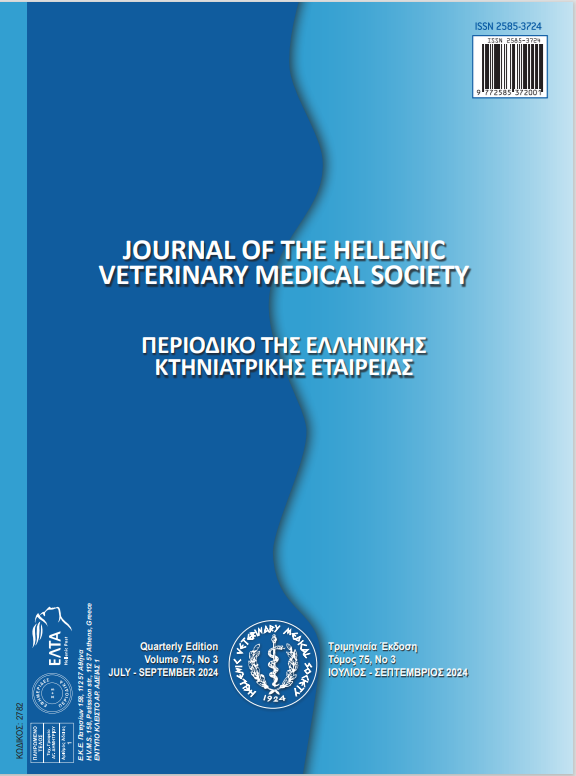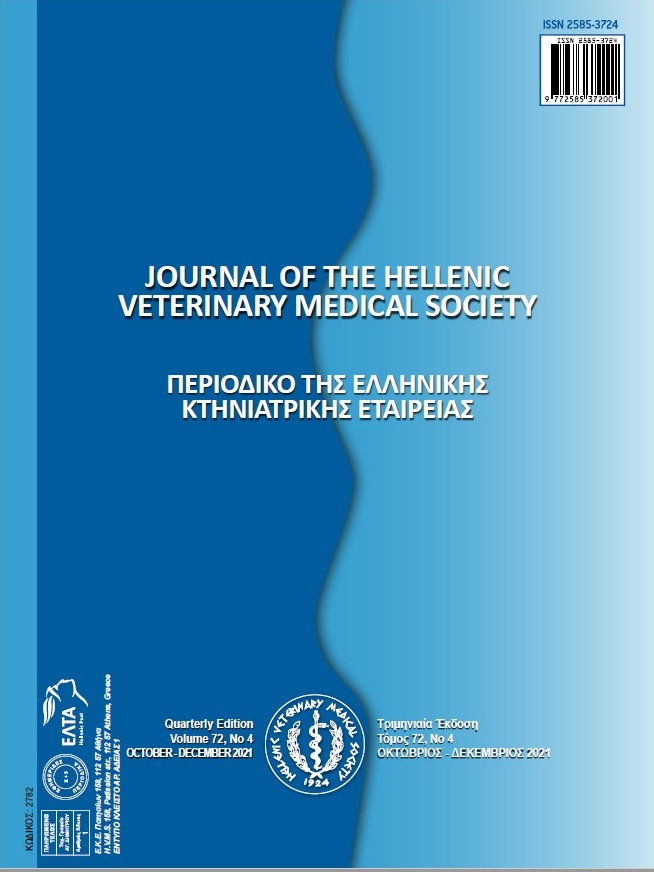Occurrence of canine and human leishmaniosis between 2020 and 2022 in the Alto Tâmega region (Portugal): a descriptive study of seropositivity in clinically suspected dogs, a status report on the occurrence of cases in humans and perception of the disease by pet tutors

Abstract
Zoonotic visceral leishmaniosis is a severe neglected zoonotic parasitic disease caused by Leishmania infantum with dogs as the major reservoir hosts. Although the European Centre for Disease Prevention and Control (ECDC) reported, in 2022, no human or animal cases in the Alto Tâmega region between 2009-2020, the truth is that there were notified cases. The present study main objective was to determine the occurrence of infection and disease among 217 clinically suspected dogs subjected to serological tests in a Reference Veterinary Clinic in the Alto Tâmega region and among human patients of the Public Health Unit of Alto Tâmega e Barroso actuation area, in northern Portugal. In addition, a questionnaire was presented to 100 of the clinic's clients during the last fortnight of October 2022. The majority of sampled dogs had no defined breed (43.7%), they were mainly males (56.7%) and under 10 years of age (29.5%). Between January 2020 and September 2022, there were 64 seropositive dogs among those subjected to anti-Leishmania antibody detection, indicating that canine leishmaniosis (CanL) had 29.5% of occurrence within the sample of the population studied. Among the seropositive dogs, 44.4% were mongrel dogs and 56.52% were males. There were no reported human cases between 2020 and 2022. The majority of the questionnaire respondents believed that leishmaniosis does not affect humans (39.0%) and that is not a public health issue (33.0%) and a
considerable part of the sample does not have a position about those questions (33.0% and 42.0%, respectively). Based on the survey sample collected, most people may not associate the disease with a zoonosis and, therefore, there may be a risk of underdiagnosis and underreport, as there is no demand for treatment and medical diagnosis directed towards some suspected cases or because human cutaneous leishmaniosis is not a notifiable disease. An improvement in education of the population in areas of endemicity is needed to reach the objective of minimizing the impact of leishmaniosis, perform a proper diagnosis and treatment, and ensure a safer bond between animals and humans.
Article Details
- How to Cite
-
Rodrigues, M., Cardoso, L., & Costa, J. (2024). Occurrence of canine and human leishmaniosis between 2020 and 2022 in the Alto Tâmega region (Portugal): a descriptive study of seropositivity in clinically suspected dogs, a status report on the occurrence of cases in humans and perception of the disease by pet tutors. Journal of the Hellenic Veterinary Medical Society, 75(3), 7641–7648. https://doi.org/10.12681/jhvms.32080
- Issue
- Vol. 75 No. 3 (2024)
- Section
- Research Articles

This work is licensed under a Creative Commons Attribution-NonCommercial 4.0 International License.
Authors who publish with this journal agree to the following terms:
· Authors retain copyright and grant the journal right of first publication with the work simultaneously licensed under a Creative Commons Attribution Non-Commercial License that allows others to share the work with an acknowledgement of the work's authorship and initial publication in this journal.
· Authors are able to enter into separate, additional contractual arrangements for the non-exclusive distribution of the journal's published version of the work (e.g. post it to an institutional repository or publish it in a book), with an acknowledgement of its initial publication in this journal.
· Authors are permitted and encouraged to post their work online (preferably in institutional repositories or on their website) prior to and during the submission process, as it can lead to productive exchanges, as well as earlier and greater citation of published work.



